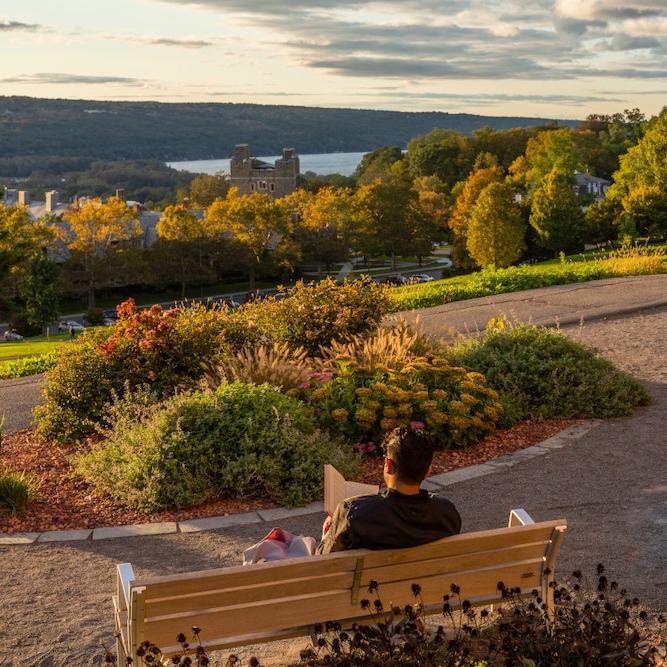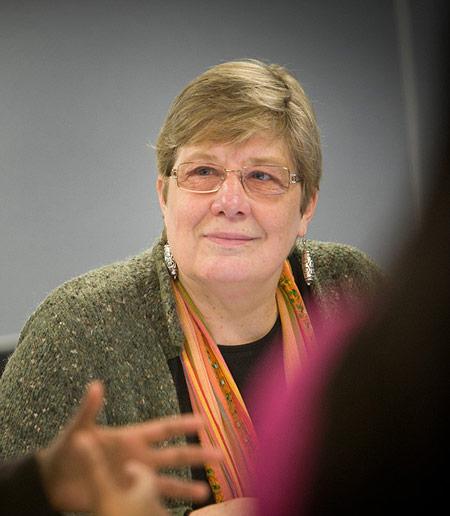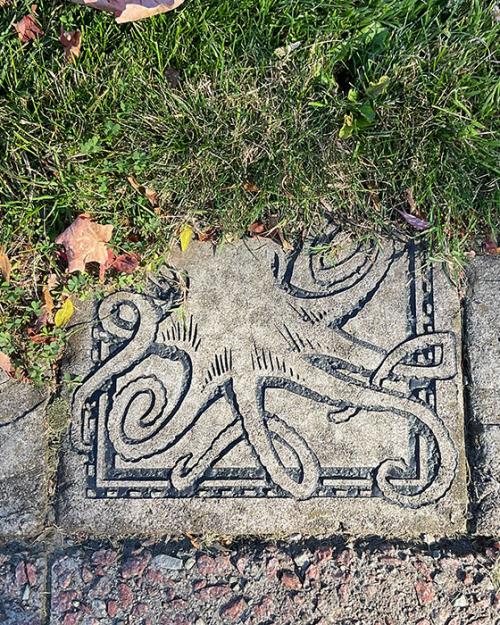In October 2024, three French scholar-artists including Cornell’s Laurent Dubreuil reenacted Odysseus’ epic voyage, but in North America. Traveling by car, train, airplane, bus, boat and foot from Troy Hills, NJ to Ithaca, NY, they collected tree leaves and took photographs as they went. They also recorded excerpts of the Greek poem, made drawings and performed rituals at sites along the way.
An exhibition of the work they created on their “Odyssea Americana” opens Sept. 4, 6 – 8 p.m. at The Soil Factory, 142 Ithaca Beer Dr. in Ithaca. A talk between the exhibit curators and artists will begin at 6:30 p.m. The event is organized by The Soil Factory (which is led by Johannes Lehmann, the Liberty Hyde Bailey Professor in the College of Agriculture and Life Sciences) and The Humanities Lab at Cornell. The trip and exhibit are co-sponsored by the French Studies Program in the College of Arts and Sciences (A&S) and the A&S Rural Humanities Project.
“In this exhibition, we tried to recreate the conflation of the mythical past and the prosaic present we experienced during the journey,” said Dubreuil, Distinguished Professor of Arts and Sciences, Director of The Humanities Lab and professor of French, francophone and comparative literature (A&S). “Prints of digital photographs will be next to handwritten excerpts of Homer’s poem. To the sound of the Greek text, different site installations, both indoor and outdoor, will also allow visitors to appropriate elements of the epic adventures, including, for instance, hiding under a sheep skin, as Odysseus when he escapes from the Cyclops’ cave.”
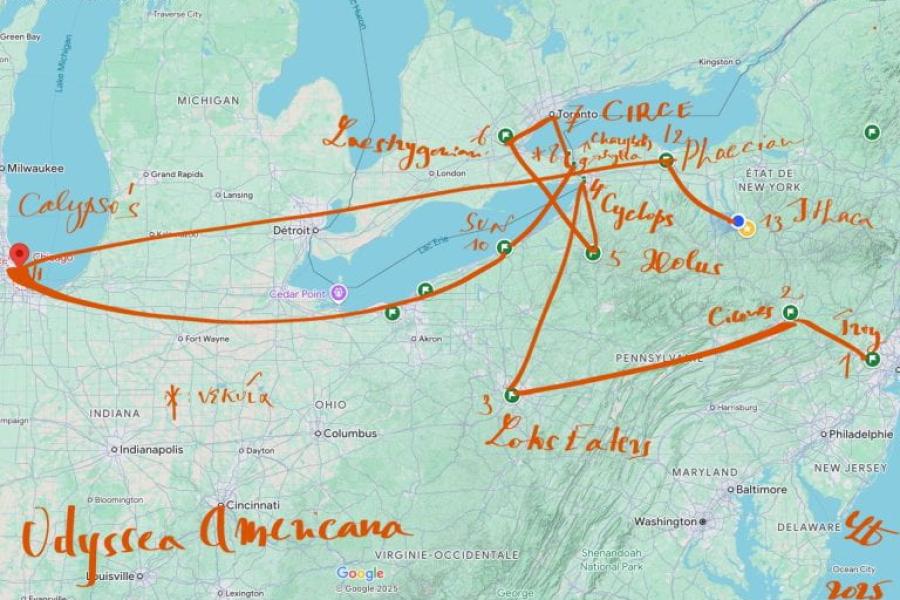
Curated by Dubreuil and Irina Troconis, assistant professor of Romance studies (A&S), the exhibit at The Soil Factory depicts the trip in photography, drawing, maps, calligraphy, installations and audio recordings. It will remain on display until Sept. 28.
In 2022, Dubreuil collaborated with Laurent Derobert, a French conceptual and performing artist and economics scholar, to collect on site in the Mediterranean the seeds of each plant mentioned in Homer’s Odyssey. Derobert designed a series of performance “rituals” and “restitutions” based on the collection, while Dubreuil wrote a book on botany in Homer’s epos, “Botaniser l’Odyssée.”
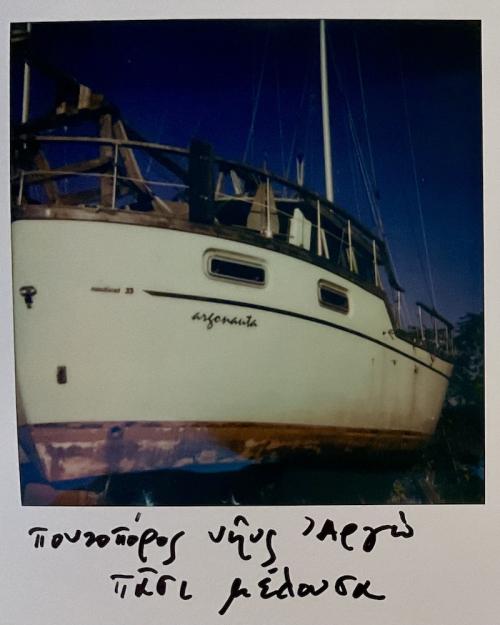
Then, taking advantage of the symbolic naming of East Coast locales in relation to the classical world, Derobert and Dubreuil, together with skipper and visual artist Gaïa Bergelin, conducted their American re-enactment of the Mediterranean journey in October 2024, traveling again from Troy (New Jersey) to Ithaca (New York).
“Owing to the American mythology of the road trip, this odyssey was mostly done with a car, also relying on other modes of transportation,” Dubreuil said. “Instead of collecting seeds, we gleaned pictures and sounds, as well as a few tree leaves, the focus being on the germination of the symbolic and the metaphorical exploration of the land.”
Most of their time was spent in rural New York, Pennsylvania, and Ontario. They conducted performances at several sites, including more than 30 readings of the Greek original text and a nekuia – an ancient Greek cult rite to call up ghosts and question them about the future.
They gave two public lectures-performances in 2024, one at the University of Chicago, the other at Cornell. Dubreuil, Derobert and Bergelin posted a virtual exhibit of images and sound recordings after completing the trip. They exhibited pieces from “Odyssea Americana” in Paris April-May 2025.


